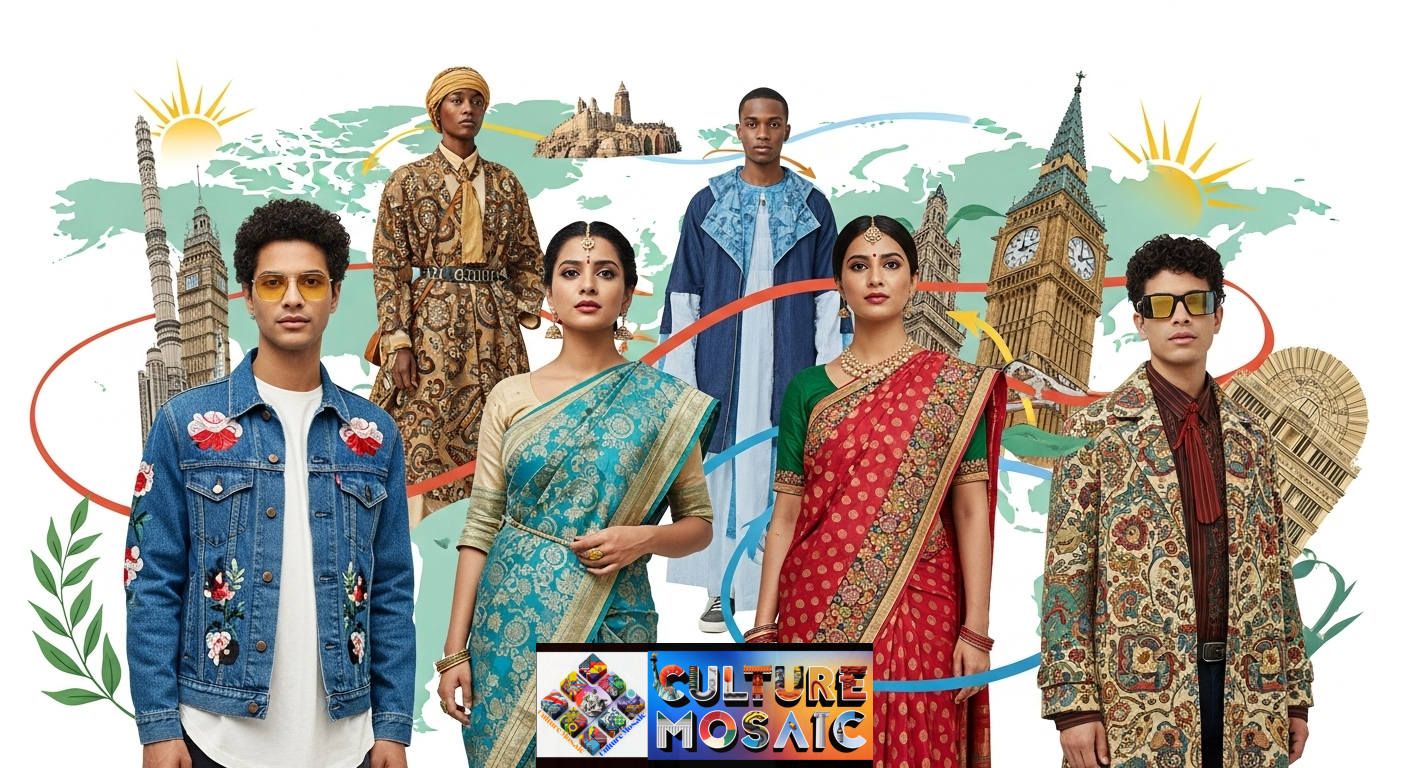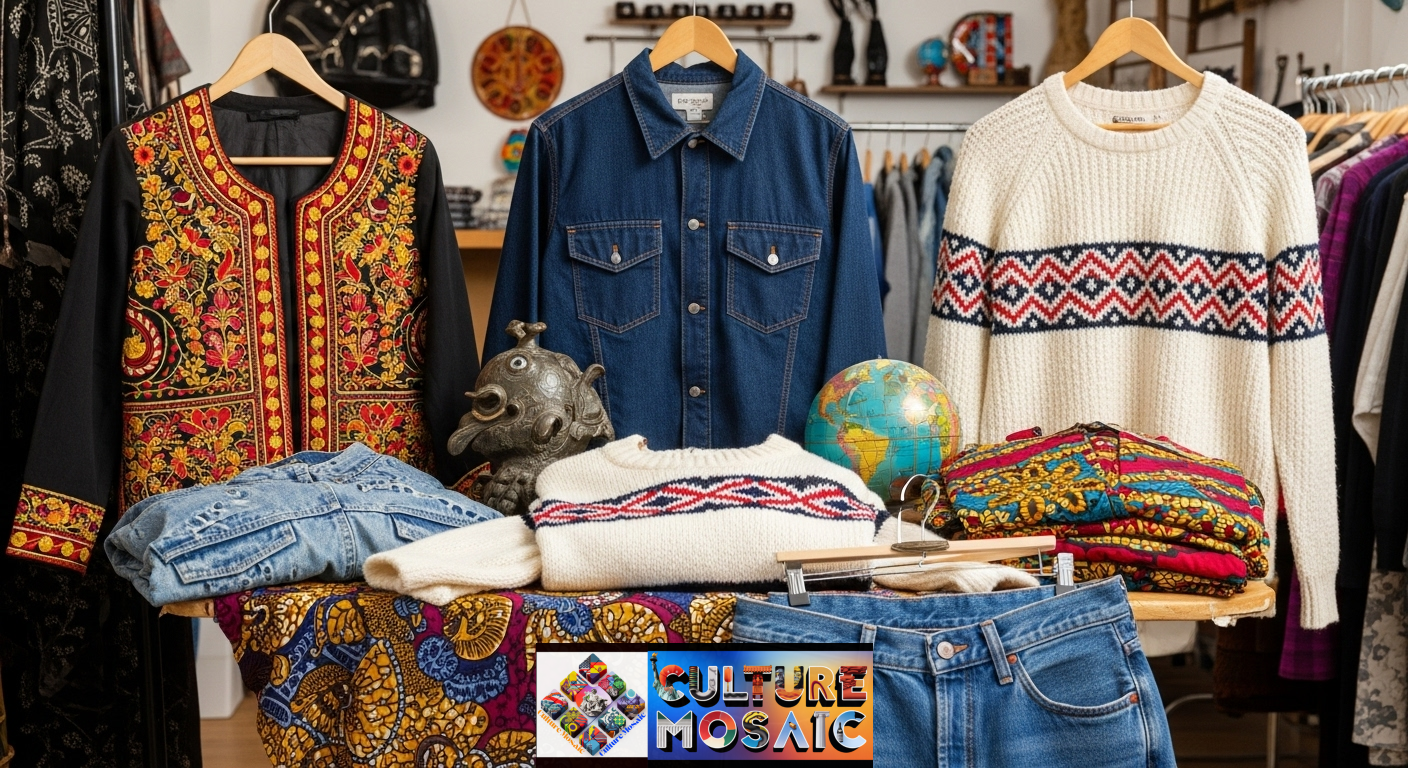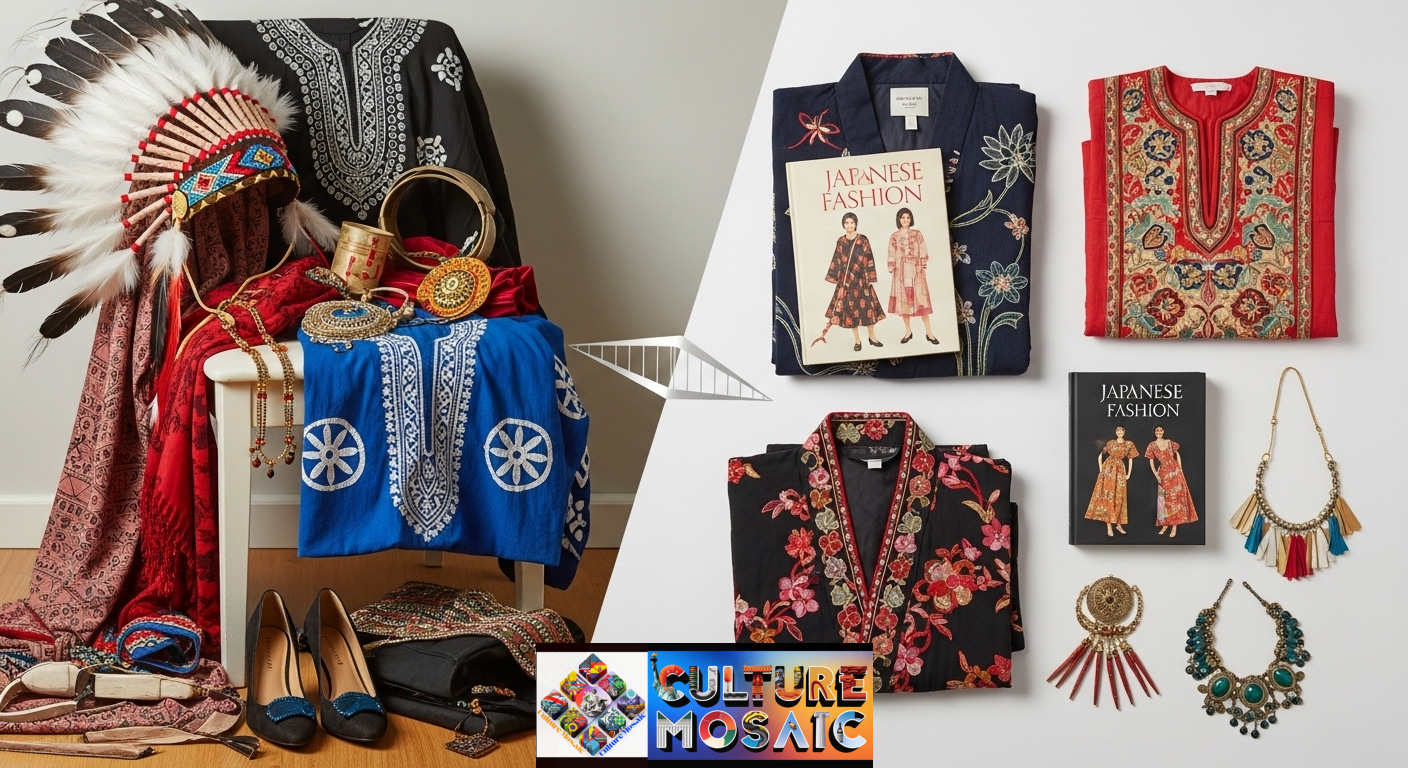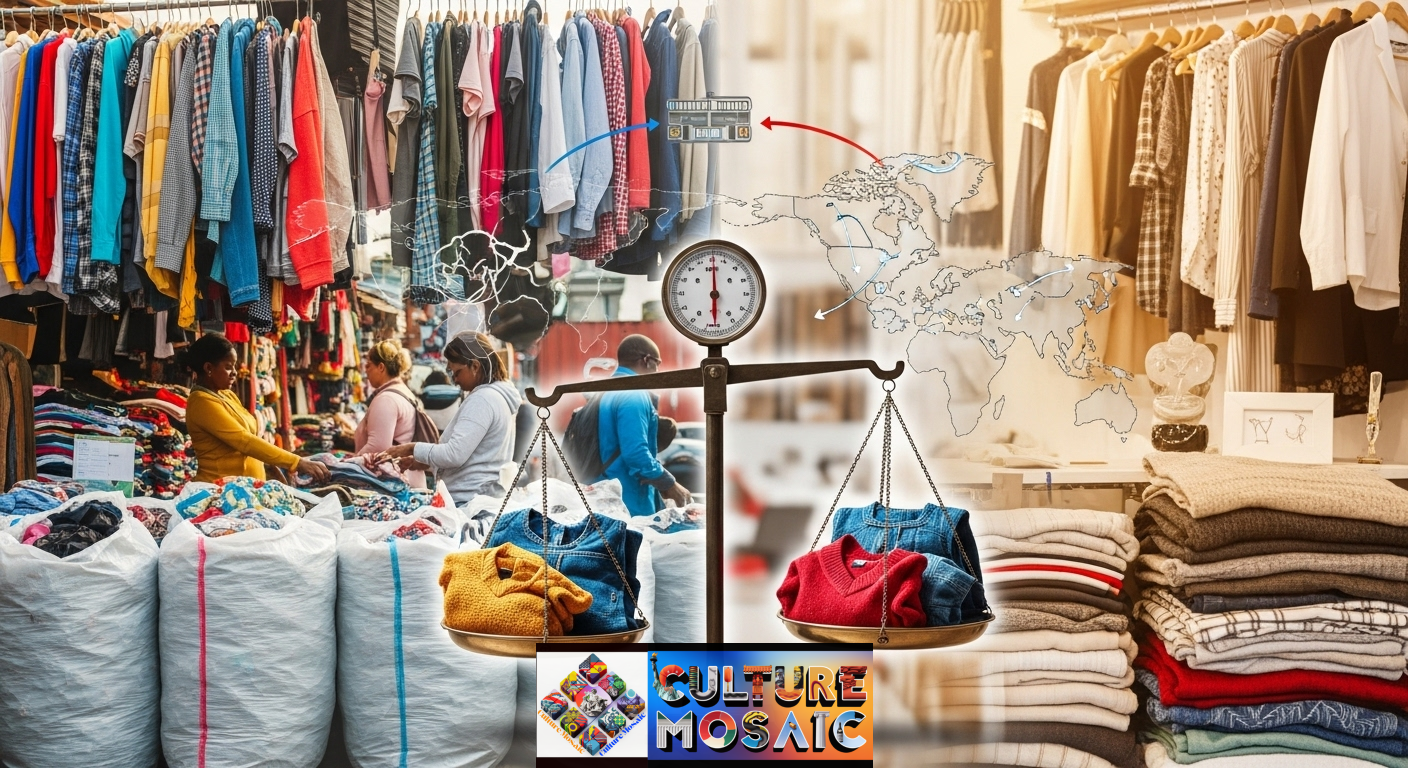Walk into any vintage shop in Brooklyn or scroll through TikTok for five minutes, and you’ll see it everywhere: the global thrift flip phenomenon. Young shoppers are hunting down secondhand treasures from around the world, transforming them into statement pieces that tell stories far beyond their price tags.
This isn’t just about saving money or looking cool. The global thrift flip represents a fundamental shift in how we think about fashion, sustainability, and cultural exchange. It’s messy, it’s complicated, and it’s one of the most important conversations happening in fashion right now.
What is Global Thrift Flip?
Global thrift flip refers to the practice of sourcing secondhand clothing from international markets, thrift stores, and vintage sellers, then restyling, upcycling, or reselling these pieces. Unlike traditional thrifting that focuses on local finds, the global thrift flip taps into worldwide fashion ecosystems.
Think vintage Japanese workwear, traditional Indian block prints, European military surplus, or African wax fabrics. These pieces carry cultural significance, craftsmanship traditions, and environmental benefits that fast fashion simply cannot replicate.
The movement has exploded on social media platforms, with hashtags related to thrift flipping generating billions of views. Young creators document their finds, share styling tutorials, and build entire businesses around curating global secondhand pieces.
Why Global Thrift Flip Matters for Sustainable Fashion

The fashion industry produces roughly 92 million tons of textile waste annually. Fast fashion brands pump out new collections every few weeks, encouraging a disposable mindset that’s destroying our planet.
Global thrift flip offers a tangible alternative. When you buy a secondhand silk scarf from Thailand or a vintage wool coat from Scotland, you’re participating circularity. You’re giving existing garments new life instead of demanding new production.
The secondhand market is projected to reach $82 billion by 2026, with Gen Z leading the charge. These young consumers understand that every thrifted purchase is a small rebellion against overproduction and waste.
But sustainability alone doesn’t explain the appeal. Global thrift flip combines environmental consciousness with genuine style innovation. You can’t walk into Zara and find the exact vintage Levi’s jacket someone scored in Tokyo. These pieces are one-of-one, which matters tremendously to a generation tired of looking like everyone else.
How to Start Your Global Thrift Flip Journey

Starting your global thrift flip adventure doesn’t require a passport or a massive budget. Here’s how to dive in responsibly.
Finding Global Pieces Locally
Your first stop should be local thrift stores, estate sales, and vintage shops. Many immigrant communities have thrift stores stocked with clothing from their home countries. These spots often go overlooked but contain incredible finds.
Online platforms have democratized access to global fashion. Websites like Depop, Poshmark, and Etsy connect you with sellers worldwide. You can search specifically for vintage pieces from particular regions or eras.
Specialized vintage dealers curate collections from specific countries. Some focus exclusively on Japanese denim, others on Scandinavian minimalism or Indian textiles. Following these sellers helps you learn about different fashion traditions while building your wardrobe.
Researching Before You Buy
This is where global thrift flip gets serious. Before purchasing any piece with cultural significance, do your homework.
Learn the history behind specific textiles and garments. That beautiful textile might be traditional ceremonial wear, not casual fashion. Understanding context helps you make informed decisions about what to buy and how to wear it.
Look for sellers who provide provenance information. Ethical resellers explain where pieces come from, their cultural context, and appropriate ways to style them. They educate rather than just sell.
Join online communities focused on ethical global fashion. These groups share knowledge, call out problematic sellers, and help members navigate complex cultural questions. The conversation is the education.
Cultural Appreciation vs. Appropriation in Global Thrift Flip

Here’s where things get uncomfortable, and that discomfort is necessary.
Cultural appropriation happens when people from dominant cultures take elements from marginalized cultures without understanding, respect, or proper credit. It’s wearing a Native American headdress to Coachella or sporting a bindi as a fashion accessory without knowing its religious significance.
Cultural appreciation involves genuine respect, learning, and acknowledgment. It’s wearing a vintage kimono-style jacket while understanding Japanese fashion history and crediting that influence. It’s celebrating global aesthetics while recognizing their origins.
The line between appreciation and appropriation in global thrift flip isn’t always clear, and that’s okay. What matters is your willingness to engage with the question.
Questions to Ask Yourself
Before incorporating globally sourced pieces into your wardrobe, consider these questions.
Does this garment have religious or ceremonial significance? Items like Māori tā moko patterns, Indigenous American regalia, or Hindu religious symbols aren’t fashion statements. They’re sacred, and wearing them casually disrespects entire communities.
Am I supporting the communities this fashion comes from? The global thrift flip should benefit the cultures it draws from. Buy from sellers within those communities when possible. Amplify voices from those backgrounds in fashion conversations.
How am I styling this piece? Context matters enormously. A traditional African dashiki worn respectfully to celebrate that culture’s aesthetic differs vastly from treating it as a costume or “exotic” prop.
Am I willing to be corrected? You’ll make mistakes. Everyone does. The question is whether you’ll listen when someone from that culture explains why something is problematic, or whether you’ll get defensive.
The Economics of Global Thrift Flip

The global thrift flip economy is complicated. On one hand, it creates opportunities for small business owners and provides affordable fashion access. On the other hand, it can price out local communities from their own secondhand markets.
In some developing countries, Western thrift flippers buying in bulk have driven up prices at local markets. What was once affordable clothing for working-class residents becomes inventory for resellers targeting wealthy Western consumers.
Ethical global thrift flip requires awareness of these dynamics. Support sellers who maintain fair pricing in their source communities. Be willing to pay more for pieces to ensure equitable compensation throughout the supply chain.
Transparency matters. The best global thrift flip sellers explain their sourcing practices, how they ensure fair pricing, and their relationships with the communities they buy from.
Styling Tips for Global Thrift Flip Pieces
Integrating globally sourced vintage pieces into modern wardrobes requires intention and creativity.
Mix, Don’t Match
Avoid creating “costumes” by wearing head-to-toe traditional pieces from cultures not your own. Instead, mix one statement piece with contemporary basics.
Pair that vintage Indian kurta with simple jeans and sneakers. Style a Japanese haori jacket over a plain t-shirt and trousers. Let the special piece shine without overwhelming your look with cultural signifiers.
Invest in Quality Basics
Global thrift flip works best when you have a foundation of well-fitting basics. Quality jeans, simple tees, and classic shoes let your unique vintage finds take center stage.
This approach also prevents you from looking like you’re playing dress-up. The contrast between contemporary basics and special vintage pieces creates intentional, thoughtful styling.
Tell the Story
When someone compliments your vintage Vietnamese silk shirt, share what you learned about it. Explain where it came from, its cultural context, and why you appreciate it.
This conversation transforms fashion into education. You’re not just wearing cool clothes but participating in cultural exchange and appreciation.
The Future of Global Thrift Flip
The global thrift flip movement is still evolving, and its future depends on how seriously we take questions of ethics, sustainability, and cultural respect.
Technology will continue shaping access. Virtual thrift stores and AI-powered styling tools make global fashion more accessible while raising new questions about authenticity and cultural context.
Younger generations are demanding transparency and accountability from all fashion sectors, including secondhand markets. This pressure will likely lead to better sourcing practices and more honest conversations about cultural dynamics.
Education will become increasingly central. Expect more resources, workshops, and online courses teaching people how to engage with global fashion respectfully and knowledgeably.
The secondhand market will keep growing, but its character depends on consumer choices. Will global thrift flip become just another way for privileged consumers to exploit global fashion traditions, or will it evolve into a genuine cultural exchange that benefits everyone involved?
Building Community Through Global Thrift Flip
The best part of global thrift flip isn’t the clothes themselves, it’s the community.
Online forums, social media groups, and local meetups connect people passionate about sustainable fashion, cultural learning, and creative styling. These spaces foster conversations that go far beyond shopping tips.
Many cities now host thrift flip markets where creators showcase their upcycled pieces, share techniques, and educate attendees about cultural contexts. These events transform shopping into community building.
Collaboration matters more than competition in this space. Successful global thrift flippers share sources, provide cultural education, and uplift voices from the communities whose fashion they celebrate.
Practical Resources for Ethical Global Thrift Flip
Several organizations and platforms support ethical engagement with global fashion.
Fashion Revolution advocates for transparency and ethics throughout fashion supply chains, including secondhand markets. Their resources help consumers ask better questions and make informed choices.
Good On You rates fashion brands and sellers on sustainability and ethical practices. While focused primarily on new clothing, their framework applies to evaluating secondhand sellers too.
Local cultural centers and museums often host exhibitions about traditional textiles and garments. Visiting these spaces provides crucial context for understanding the pieces you might encounter while thrifting.
Common Mistakes in Global Thrift Flip
Even well-intentioned people make mistakes when starting their global thrift flip journey.
Treating cultural garments as costumes remains the biggest issue. That vintage cheongsam or traditional Mexican embroidered blouse represents someone’s heritage, not your aesthetic experimentation.
Failing to research sellers leads to supporting unethical supply chains. Some resellers exploit workers or communities in source countries. Five minutes of research can reveal a lot about seller practices.
Ignoring feedback from cultural insiders creates ongoing harm. When someone from a culture explains why your styling is problematic, listen rather than defend.
Overpaying for common items while underpaying for truly special pieces shows misplaced values. Learn enough about global fashion to recognize genuine quality and cultural significance.
The Global Thrift Flip Mindset
Success in global thrift flip requires shifting how you think about fashion entirely.
Slow down. Fast fashion trained us to buy constantly and dispose of quickly. Global thrift flip demands patience—hunting for special pieces, learning their stories, and wearing them for years.
Stay curious. Every garment has a history. Who made it? Where did it come from? What techniques were used? These questions transform shopping into anthropology.
Remain humble. You don’t know everything about every culture’s fashion traditions, and that’s fine. Acknowledge your gaps in knowledge and commit to learning.
Prioritize people over profit. Whether you’re buying for personal use or reselling, remember that real communities created these pieces and continue living these fashion traditions.
Making Global Thrift Flip Accessible
Not everyone can afford vintage shops or has time for endless thrift store hunts. Making global thrift flip more accessible matters for the movement’s future.
Clothing swaps create free opportunities to exchange globally sourced pieces within communities. These events democratize access while building relationships.
Online communities share finds, tips, and even ship pieces to members who lack local resources. This mutual aid approach strengthens the movement.
Education shouldn’t cost money. Free resources, social media content, and community workshops make cultural learning accessible to everyone interested in global thrift flip.
Frequently Asked Questions
What is the difference between global thrift flip and regular thrifting?
Global thrift flip specifically focuses on sourcing secondhand clothing from international markets and cultures, then restyling or upcycling these pieces. Regular thrifting typically involves shopping at local secondhand stores without the international or cultural focus. Global thrift flip requires more cultural awareness and research about the origins and significance of pieces.
How can I avoid cultural appropriation when doing a global thrift flip?
Research any piece with cultural significance before purchasing, avoid items with religious or ceremonial meaning, buy from sellers within those communities when possible, and be willing to listen when someone explains why something is problematic. Mix culturally significant pieces with contemporary basics rather than creating head-to-toe traditional outfits from cultures not your own.
Where can I find authentic global thrift pieces online?
Platforms like Depop, Poshmark, Etsy, and specialized vintage dealers offer globally sourced secondhand clothing. Look for sellers who provide detailed provenance information and cultural context. Join online communities focused on ethical global fashion to get recommendations for trustworthy sellers.
Is global thrift flip actually sustainable?
Yes, when done ethically. Buying secondhand clothing prevents textile waste and reduces demand for new production. However, sustainability also means ensuring your purchases don’t price out local communities from their own secondhand markets. Support sellers with transparent, fair sourcing practices.
Can I resell global thrift flip pieces I purchase?
You can resell pieces, but do so ethically. Provide cultural context and education to buyers, price fairly without extreme markup, ensure you’re not depleting local markets in source countries, and amplify voices from the cultures these pieces come from. Reselling should involve cultural appreciation and education, not just profit.

